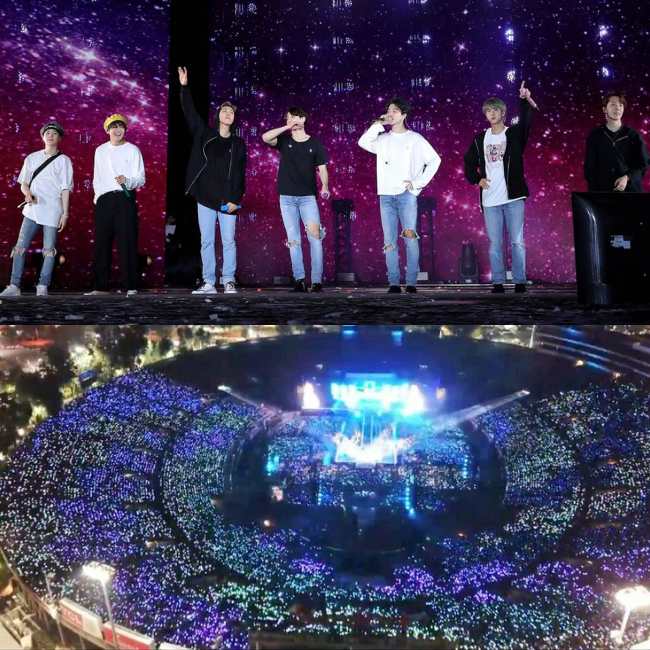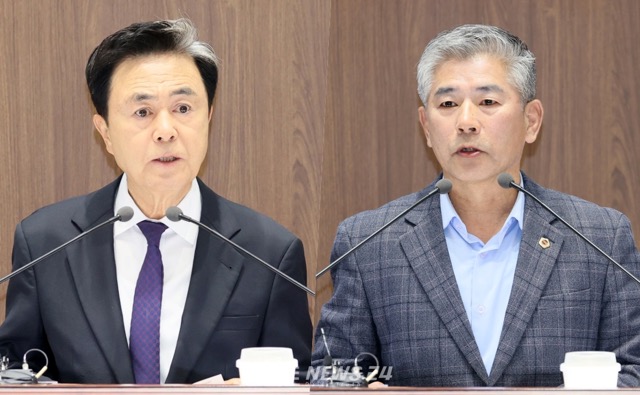BTS is not only a cultural icon and a musical phenomenon but also a major economic driver in South кσяєα. Their influence boosts interest in кσяєαn culture, cuisine, and tourism, indirectly generating revenue for related industries. Many economists estimate that BTS events create a “domino effect” for the economy.
This is why the entire country is eagerly awaiting the return of the world’s top K-pop superstars—BTS—in the spring of 2026. Their comeback is expected to revive K-pop, which has been in a lull, and significantly increase revenue from related economic activities.

BTS’s influence is so immense that, even before their actual return, the authorities have been closely calculating the enormous economic value they bring. They have even incorporated BTS into discussions about national economic benefits, emphasizing the urgent need to build the largest stadium ever.
Specifically, on the 25th, during the plenary session of the Chungnam Provincial Council, a heated debate took place regarding the plan to build the “Cheonan-Asan Station Dome Stadium (K-pop performance venue).” Assemblyman Cho Cheol-gi (Democratic Party, Asan 4) focused his questioning on the feasibility of the project and the мєтнod of securing funding during the morning council session.
Governor Kim responded: “We will explore private investment without relying on the national budget. This is a project worth pursuing even if it requires borrowing, considering its feasibility and potential impact.”
Cho Cheol-gi criticized the project as “reckless,” asking: “From basic design, feasibility stu∂ιєs, to permits, this project will take at least 6–10 years. Are you intending to build it immediately, or do you want to plan it with citizens as a long-term, executable strategy?”
Governor Kim then used BTS as an example to demonstrate that the stadium project represents “new thinking, not recklessness.” He said: “If BTS performs in South кσяєα, each show could generate trillions of won, and 10 shows would exceed ten trillion won in economic impact. Current venues only hold 16–18 thousand seats, which is insufficient for large-scale performances.”

He compared the situation to ѕιиgαρσяє: “ѕιиgαρσяє has a population of 5 million but operates a 55,000-seat stadium. We are a country of 50 million, with K-pop and Hallyu surging globally, yet South кσяєα still lacks a permanent 50,000-seat performance venue.”
The project is estimated to cost 1 trillion won for facilities alone, excluding land acquisition. Kim emphasized: “Even if there are losses, one must consider the impact on hotels, commerce, and tourism. Multi-purpose stadiums in נαραи and the U.S. rarely operate at a loss. A well-designed stadium can generate profits.”

Governor Kim’s example received widespread support from netizens, particularly considering that BTS has sold out ~40,000–50,000 seats per night at Tokyo Dome and Sapporo Dome during the BTS World Tour ‘Love Yourself’ and ‘Speak Yourself.’ They have also performed at Rose Bowl, Sol∂ιєr Field, and MetLife Stadium—the largest stadiums in the U.S., with capacities of up to 80,000.
Fans also point out that South кσяєα’s stadium infrastructure cannot accommodate the ticket demand for BTS. For example, when Jin started his solo tour in South кσяєα, he had to rent the small Goyang Sports Complex Auxiliary Stadium, which only holds 10,000 seats, because no larger stadium was available.
This capacity was far below Jin’s drawing power. According to Billboard Top Tours, the average attendance per night for Jin’s overseas concerts is around 18,000. Meanwhile, his two-night shows at Kyocera Dome (Osaka) drew about 110,000 people—55,000 per night.
This was just Jin’s solo concert. Imagine the draw when BTS returns with all members. Moreover, this does not account for the many fans who are unable to secure tickets for BTS concerts.
Of course, the influx of global fans to concert venues also drives increased demand for flights, hotels, merchandise, and services. Generating millions of USD in revenue per night for a 50,000-seat concert is entirely within BTS’s capability. Considering the long-term benefits, this project is highly promising.






